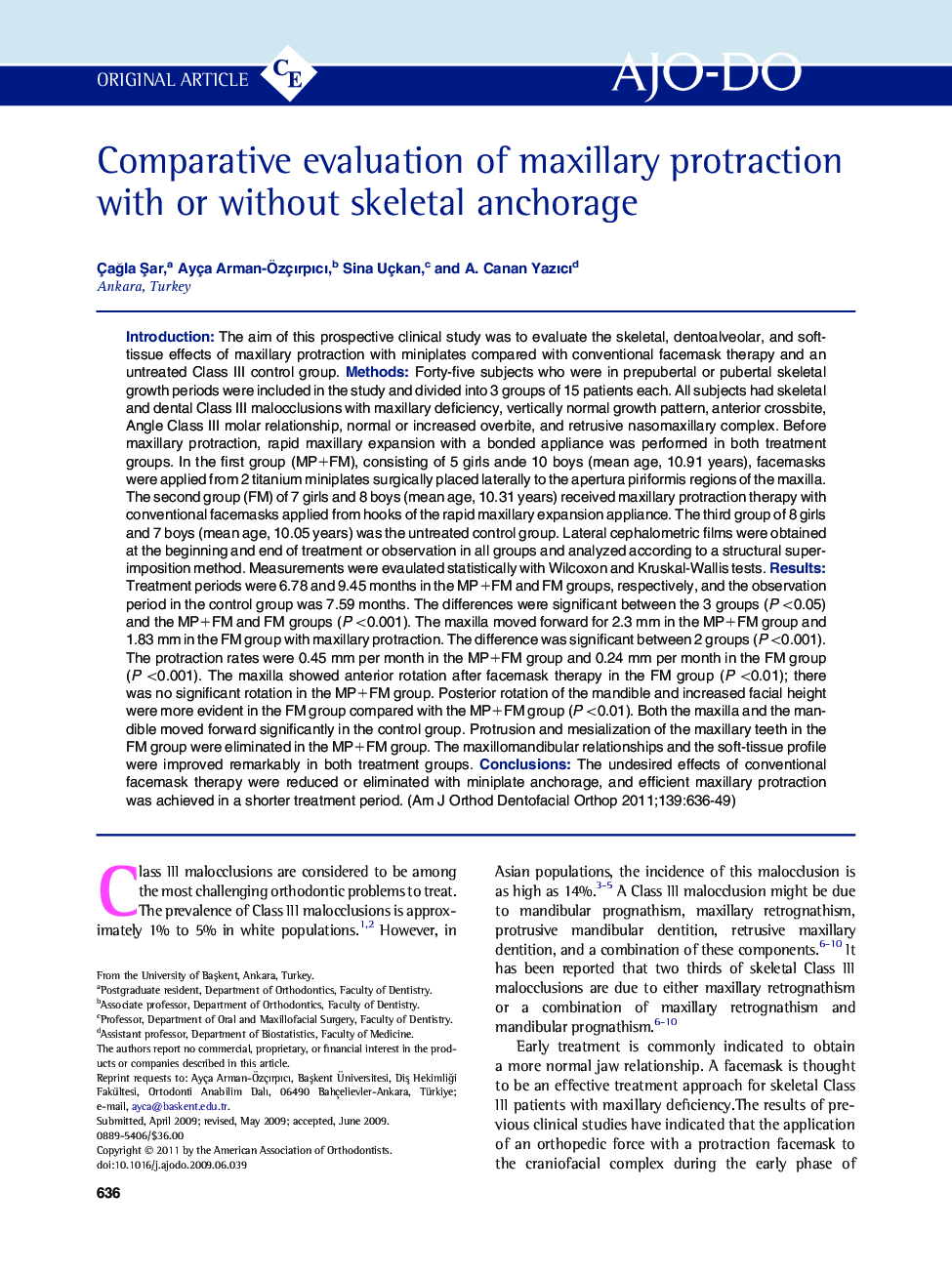| کد مقاله | کد نشریه | سال انتشار | مقاله انگلیسی | نسخه تمام متن |
|---|---|---|---|---|
| 3118761 | 1582741 | 2011 | 14 صفحه PDF | دانلود رایگان |

IntroductionThe aim of this prospective clinical study was to evaluate the skeletal, dentoalveolar, and soft-tissue effects of maxillary protraction with miniplates compared with conventional facemask therapy and an untreated Class III control group.MethodsForty-five subjects who were in prepubertal or pubertal skeletal growth periods were included in the study and divided into 3 groups of 15 patients each. All subjects had skeletal and dental Class III malocclusions with maxillary deficiency, vertically normal growth pattern, anterior crossbite, Angle Class III molar relationship, normal or increased overbite, and retrusive nasomaxillary complex. Before maxillary protraction, rapid maxillary expansion with a bonded appliance was performed in both treatment groups. In the first group (MP+FM), consisting of 5 girls ande 10 boys (mean age, 10.91 years), facemasks were applied from 2 titanium miniplates surgically placed laterally to the apertura piriformis regions of the maxilla. The second group (FM) of 7 girls and 8 boys (mean age, 10.31 years) received maxillary protraction therapy with conventional facemasks applied from hooks of the rapid maxillary expansion appliance. The third group of 8 girls and 7 boys (mean age, 10.05 years) was the untreated control group. Lateral cephalometric films were obtained at the beginning and end of treatment or observation in all groups and analyzed according to a structural superimposition method. Measurements were evaulated statistically with Wilcoxon and Kruskal-Wallis tests.ResultsTreatment periods were 6.78 and 9.45 months in the MP+FM and FM groups, respectively, and the observation period in the control group was 7.59 months. The differences were significant between the 3 groups (P <0.05) and the MP+FM and FM groups (P <0.001). The maxilla moved forward for 2.3 mm in the MP+FM group and 1.83 mm in the FM group with maxillary protraction. The difference was significant between 2 groups (P <0.001). The protraction rates were 0.45 mm per month in the MP+FM group and 0.24 mm per month in the FM group (P <0.001). The maxilla showed anterior rotation after facemask therapy in the FM group (P <0.01); there was no significant rotation in the MP+FM group. Posterior rotation of the mandible and increased facial height were more evident in the FM group compared with the MP+FM group (P <0.01). Both the maxilla and the mandible moved forward significantly in the control group. Protrusion and mesialization of the maxillary teeth in the FM group were eliminated in the MP+FM group. The maxillomandibular relationships and the soft-tissue profile were improved remarkably in both treatment groups.ConclusionsThe undesired effects of conventional facemask therapy were reduced or eliminated with miniplate anchorage, and efficient maxillary protraction was achieved in a shorter treatment period.
Journal: American Journal of Orthodontics and Dentofacial Orthopedics - Volume 139, Issue 5, May 2011, Pages 636–649